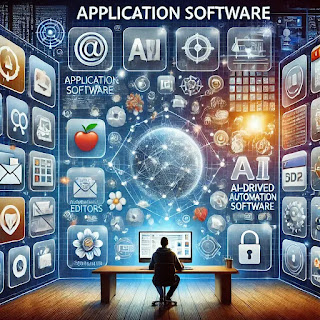Servers
Servers play a pivotal role in the digital world, powering websites, databases, and cloud-based applications that we rely on every day. Whether you're setting up a small business network or running a large-scale enterprise, understanding servers and how they function is crucial. In this post, we'll dive into the basics of servers, the different types available, key features, and tips for choosing the right one for your needs.
What is a Server?
At its core, a server is a specialized computer that provides services, resources, or data to other computers, called clients, over a network. Servers typically handle requests from clients (such as web browsers, email clients, or applications) and respond by delivering content, processing data, or executing tasks.
Types of Servers
There are several types of servers, each designed to meet specific needs. Here's a breakdown of the most common types:
Web Server
- Examples: Apache HTTP Server, Nginx, Microsoft IIS
- Web servers are responsible for delivering web pages to users' browsers. When you visit a website, your browser sends a request to the web server, which responds by sending the requested files (HTML, CSS, JavaScript) back to the browser.
Database Server
- Examples: MySQL, Microsoft SQL Server, PostgreSQL
- These servers store and manage databases. When a client application needs data, it queries the database server, which retrieves the relevant data and sends it back to the client.
File Server
- Examples: Windows Server, Synology NAS
- File servers store and manage files that can be accessed over a network. They’re commonly used for sharing documents, media files, and backups.
Mail Server
- Examples: Microsoft Exchange, Postfix, Sendmail
- Mail servers handle the sending, receiving, and storing of email. They use protocols like SMTP (Simple Mail Transfer Protocol) and IMAP (Internet Message Access Protocol) to manage email communication.
Application Server
- Examples: Tomcat, JBoss, WebLogic
- Application servers host and run applications, often providing the necessary environment to execute software code and manage requests from users.
DNS Server
- Examples: BIND, Microsoft DNS
- DNS (Domain Name System) servers translate domain names (like www.example.com) into IP addresses that computers use to communicate with each other.
Proxy Server
- Examples: Squid Proxy, HAProxy
- Proxy servers act as intermediaries between clients and other servers. They provide security, caching, and sometimes anonymity by forwarding requests and responses.
Key Features of Servers
When considering a server, there are several key features and specifications you should focus on:
Processor (CPU)
- Servers are often equipped with powerful processors designed to handle multiple tasks simultaneously. Look for multi-core processors that offer fast performance and scalability.
RAM (Memory)
- The amount of RAM a server has determines how much data it can process at once. High-performance servers typically have a large amount of RAM to handle heavy workloads and multiple simultaneous connections.
Storage
- Servers require reliable and scalable storage solutions. You’ll typically find either HDDs (Hard Disk Drives) for large storage capacities or SSDs (Solid-State Drives) for faster data access speeds.
Network Connectivity
- Servers must have high-speed network connections to handle large volumes of incoming and outgoing data. Features such as gigabit Ethernet or even 10Gb Ethernet are common for enterprise-level servers.
Scalability
- Scalability refers to the ability to upgrade or expand server resources to meet growing demand. Whether you need additional storage, processing power, or memory, a good server should offer options for easy expansion.
Redundancy and Backup
- Redundancy is vital for ensuring your server remains operational even in case of hardware failure. Common features include RAID configurations (Redundant Array of Independent Disks), dual power supplies, and hot-swappable hard drives for quick replacements.
Security Features
- Servers must be equipped with strong security protocols, such as firewalls, encryption, and anti-malware protection, to safeguard sensitive data from unauthorized access and cyber threats.
How to Choose the Right Server for Your Needs
Selecting the right server depends on several factors, including your specific use case, budget, and growth projections. Here’s a guide to help you choose:
Determine the Purpose of the Server
- Are you setting up a website, managing an internal database, or providing email services? Identifying your primary need will help you narrow down your options.
Consider Performance Needs
- High-traffic websites and large databases require more powerful servers with faster processors, more RAM, and faster storage. Smaller websites or local networks may function with less powerful configurations.
Evaluate Budget Constraints
- Servers can vary widely in price depending on features, performance, and brand. While it’s tempting to go for the highest-end server, it’s important to match your budget with your requirements.
Think About Scalability
- Choose a server that can scale with your business or personal needs. Will your network grow? Opt for a server with flexible upgrade options.
Ensure Proper Support and Maintenance
- Look for a server from a reputable provider that offers customer support, warranties, and maintenance options.
Popular Server Brands
Here are some of the leading brands for servers:
Dell EMC
- Known for its PowerEdge servers, which are reliable and scalable, ideal for enterprise applications.
Hewlett Packard Enterprise (HPE)
- HPE's ProLiant series is a popular choice for businesses of all sizes, offering flexibility and performance.
Lenovo
- Offers a wide range of servers, including the ThinkSystem series, known for excellent performance and value.
IBM
- Known for its high-end enterprise servers, including the IBM Power Systems and IBM Z systems for critical workloads.
Supermicro
- Offers customizable servers and solutions, known for high performance and energy efficiency.
Common Server Configurations
Here’s a glimpse of typical server configurations for different purposes:
- Small Business Server (2-4 CPU cores, 16-32GB RAM, 1TB HDD/SSD)
- Web Server (4-8 CPU cores, 32-64GB RAM, 2TB SSD for fast read/write speeds)
- Database Server (8+ CPU cores, 64+GB RAM, 4TB SSD with RAID)
- Application Server (8 CPU cores, 64GB RAM, 1TB SSD)



Comments
Post a Comment